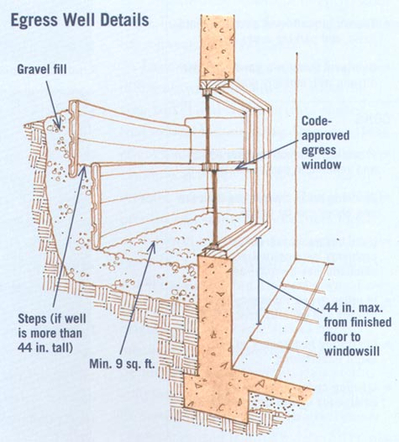In-laws, Outlaws, and Granny Flats
How to add a second unit
The advantages of having an extra place for guests or relatives to stay are pretty obvious. And more so today as parents live longer, kids remain at home after graduating, and renting a unit helps your paycheck. But actually building an in-law, granny flat, or guest studio on your property is neither easy nor obvious. I know from the experience of building two different in-law apartments in our homes that the design, permitting, and construction hurdles are serious. This book is chock full of very practical tips, great advice, and plenty of real world examples. Because in-laws, converted garages and guest cottages, are by definition small and compact, you’ll need the kind of efficient design tips offered here. I can’t think of a similar or better source of help that would be useful from the moment you start fantasizing about adding a second unit, till you apply for permits (or not), and finish the last coat of paint. And BTW, if you ever dream about building your own house, even with hired hands, adding an in-law is a great way to practice your contracting skills.
09/9/11Excerpt
Bump-outs have great appeal because they conserve yard space and, because they adjoin the house, there's one less wall to build. If you want to create a living space for an elderly parent or a caregiver, they'll be right on the other side of the wall.
Carve-outs are even more intimate. Created by carving out a suite of rooms within a house, they are the least expensive and least disruptive type of in-law to build. Close off an interior door or two, add soundproofing, install a kitchenette, and, voila, a second home.
Living in an attic in-law can be a great adventure for the right person. Sloping roofs, skylights, quirky nooks, and long views create an inherently romantic, cozy living space. Because of the stairs involved, though, such units are probably best suited to a younger person, or at least someone with strong legs and a good back.
Most municipalities will allow you to convert an old garage to another use. But often you must first create new parking spots to replace the ones lost by the conversion.
*
When there's a living space above a garage, getting the details right is important for health and safety. Your local building authority has the final say, but the following tips can help make your unit a safer, more pleasant place to be:
Install fire-resistant (Type X) drywall on garage walls and ceilings. The thicker the panel, the higher its fire rating; a thickness of 5/8 in. is often specified. On walls and ceilings between a garage and living space, fire codes may require two layers of Type X drywall.
Spray insulation is a good choice to insulate the floors of in-law units over garages. It seals cracks and effectively deadens the transmission of sound.
Install a motion-sensor exhaust system to clear the garage of noxious fumes. Typically an exhaust fan starts when a car pulls in or out, and runs until a timer switch shuts it off.
*
Older people appreciate the lack of steps going from indoors to outdoors, but completely flat and level surfaces aren't' ideal. Place patios at least 2 to 3 in. below the level of interior floors. Otherwise, water collecting on the patio could run inside the house and cause water damage. In addition, slope patios gently away from the building at a rate of 1/16 in. to 1/8 in. per lineal foot so they'll drain properly.
*
To enable occupants to exit quickly in case of a fire, building codes require a method of escape--egress--for sleeping rooms on every level of the house, including the basement. Because egress windows must also be large enough to allow a fully equipped firefighter to enter, codes specify the size of the egress - typically at least 20 in. wide and at least 24 in. tall, with a combined net-clear opening of at least 5.7 sq. ft.
To make it possible to clim out of an egress window, codes generally specify a maximum sill height of 44 in. above the floor, although a 32-in. sill height seems more reasonable if there are kids or elders present. (Check your local codes; some require two egress points for basement in-laws.) Installing an egress window in a concrete foundation all is a job for a pro and may require the installation of an egress well.

In-Laws, Outlaws, and Granny Flats Michael Litchfield 2011, 218 pages $17






